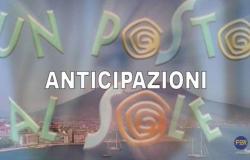A vertical study on contemporary Italian comic culture starting from the beginning and more precisely from the place where everything was born. Literally. In other words? Telling what the Derby was to those who weren’t there. This is, after all, the objective of “Once upon a time there was Derby”, a documentary directed by Marco Spagnoli and produced by Samarcanda Film and Rai Documentari which traces the history of Italian comedy. The film will arrive on television (on RaiTre) on the evening of Friday 19 April.
It all started in the dilapidated cellar of a restaurant at number 86 in Via Monterosa (the current location of the Cantiere social centre). In 1962 Milan was experiencing the years of the economic boom, the great migration from the South to the factories of the North. It was precisely in 1962 that the spouses Gianni and Angela Bongiovanni, Diego Abatantuono’s maternal uncles, decided to transform their restaurant – the Gi-Go – into something different. Their intention was to revive the modest turnover, in reality they found themselves having to deal with a cultural phenomenon destined to set a precedent.
It is the Milan of dialects, of oddballs and Baùscia commanders, with the little family-run factory and the daughter in administration. The comedians who take turns on the small stage are little more than amateurs, but that anarchic and slightly surreal gym shapes their talents and almost all those who pass through the cabaret in Via Monterosa will manage to make their way into the world of television entertainment over the years , theatrical and cinematographic. “Something like this is unrepeatable and could only happen in Milan – said director Marco Spagnoli -. The country was changing rapidly, there was, Italy was experiencing great political and social transformations. The Derby has gone through the Italy of the economic boom, of the great reforms but also of terrorism (which however remained outside the door)”.
In a quarter of a century, strangers called: Claudio Bisio, Massimo Boldi, Teo Teocoli, Mauro Di Francesco, Giorgio Porcaro, Giorgio Faletti, Francesco Salvi and Paolo Rossi have come and gone on the club’s stage. Before them sacred monsters like Bruno Lauzi, Gianni Magni, Gianni Cajafa, Walter Valdi, Cochi and Renato, Felice Andreasi, Enzo Jannacci. Aldo, Giovanni and Giacomo are missing from the list, they should have started in the autumn of 1985 (two years after the founder’s death), but the restaurant was closed first following a narcotics raid.
Among the Derby tables there was a cross-section of Milanese and Italian society. You could meet exponents of the alternative Milan of intellectuals, designers and advertisers, famous actors and busy directors. Not even Milan’s underworld was missing from the nightly meeting in Via Monterosa: like Luciano Lutring, the “machine gun soloist”, but also Renato Vallanzasca and Francisc Turatello. There was no shortage of names of industrialists, athletes and the nobility (decayed and otherwise). The Derby was not, at least in fact, a venue truly “for everyone”, in the sense that those who worked – according to the traditional conception we have of work today – could not be a regular at a venue where the shows rarely started before 11pm and they ended at first light or even later. Most of those who went to the Derby did not have ‘ordinary’ employment the next morning.
The history of the venue was told through archive materials, but above all thanks to numerous interviews with those who walked that stage. Among these, the testimony of Massimo Boldi stands out who during the presentation evening pointed out: “Gianni Bongiovanni said that doing cabaret at the derby is like being a trapeze artist without a net: you start, but you never know where the fuck you end up”.
Tags: documentary derby




